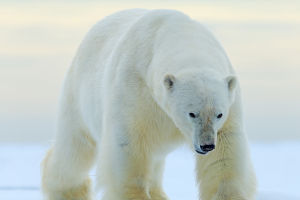Rhinoceros, the giant herbivorous animals, are a wonder to behold in the animal kingdom. Known for their massive size and strength, they are revered as the "tanks" of the African grasslands, where even powerful predators like lions and tigers dare not provoke them. With their massive bodies and sturdy horns, they are truly a force to be reckoned with.
The rhinoceros, with a body length of nearly five meters and a weight of up to six tons, is the second-largest land mammal after elephants. They have a life expectancy of about 50 years and are known for their slow-witted nature and poor vision.
Despite this, they have a keen sense of smell and hearing, which is why small birds often perch on their bodies to feed on the parasites and insects that the rhinoceros stir up as they walk. These small birds also act as sentinels, alerting the rhinoceros of any danger with their chirps.
An adult male rhinoceros typically occupies a territory of about ten square kilometers, which he patrols to prevent intrusion by other males. Female rhinos and young rhinos are allowed to cross these territories to find food and water further away. The rhinoceros' dung, which is excreted in large quantities, accumulates in piles along the borders of their territories, providing a source of food for many other animals in the ecosystem.
Another interesting relationship that rhinoceroses have with other animals is with African cattle jays. These birds often accompany rhinoceroses, feeding on the ticks that infest the rhino's bodies. In turn, the rhinoceros benefits from the removal of parasites and an early warning system in case of danger.
The rhinoceros are slow-moving and have poor vision, making them vulnerable to big cats like lions and tigers. However, adult rhinos have no natural enemies except for humans, who have hunted them for their valuable horns.
Despite their bulkiness, rhinoceroses are capable of walking or running at a fairly fast speed, even in dense, thorny forests. For example, the African black rhinoceros can reach a speed of 45 kilometers per hour over short distances, making them formidable animals.
In conclusion, the rhinoceros is a fascinating animal that embodies strength, resilience, and a unique relationship with other species in the ecosystem. As one of the largest land mammals on Earth, they are a true marvel of nature and a crucial part of the African savannah.
We must work to protect and conserve these magnificent creatures, so that future generations can continue to appreciate the wonder of rhinoceroses.


